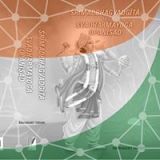Localcircles survey in Hindu newspaper
Community social media platform ‘LocalCircles’ recently did a survey on the Indian consumer’s perception about items imported from China. The results gave a peek into the minds of Indian consumers. It showed 52% of participants were of the opinion that for the same product, the quality of a ‘Made in India’ version was superior to the one from China. However, 83% said they buy Chinese products as those items were the cheapest. On the issue of addressing ‘quality concerns’ about imported Chinese items, 98% said there should be better screening of such products before they enter the Indian market — including ensuring that only those imports meeting the Indian (BIS) standards are allowed.
The poll assumes significance as it comes amid ongoing negotiations for a mega-regional Free Trade Agreement (FTA) among 16 Asia-Pacific nations, including China and India. Known as the Regional Comprehensive Economic Partnership (RCEP), the proposed FTA, aims to boost goods trade by eliminating most tariff and non-tariff barriers — a move that is expected to provide the region’s consumers greater choice of quality products at affordable rates. It also seeks to liberalise investment norms and do away with services trade restrictions.
The RCEP is billed as an FTA between the 10-member ASEAN bloc and its six FTA partners — India, China, Japan, South Korea, Australia and New Zealand. When inked, it would become the world’s biggest free trade pact. This is because the 16 nations account for a total GDP (Purchasing Power Parity, or PPP basis) of about $50 trillion (or about 40% of the global GDP) and house close to 3.5 billion people (about half the world’s population). India (GDP-PPP worth $9.5 trillion and population of 1.3 billion) and China (GDP-PPP of $23.2 trillion and population of 1.4 billion) together comprise the RCEP’s biggest component in terms of market size.
The RCEP ‘guiding principles and objectives’ state that the “negotiations on trade in goods, trade in services, investment and other areas will be conducted in parallel to ensure a comprehensive and balanced outcome.” However, it is learnt that China, using its influence as the global leader in goods exports, has been deploying quiet diplomacy to ensure consistent focus on attempts to obtain commitments on elimination of tariffs on most traded goods.
China is keen on an agreement on a ‘high level’ of tariff liberalisation — eliminating duties on as much as 92% of traded products. However, India’s offer is to do away with duties on only 80% of the lines and that too, with a longer phase-out period for Chinese imports (ie, about 20 years, as against 15 for other RCEP nations).
Duty impact on India
A highly ambitious level of tariff elimination without enough flexibility would affect India the most on the goods side. This is because in the RCEP group (except Myanmar, Cambodia and Lao PDR), India has the highest average ‘Most Favoured Nation (MFN) tariff’ level at 13.5%. MFN tariff, as per the WTO, refers to normal, non-discriminatory tariff charged on imports — excluding preferential tariffs under FTAs and other schemes or tariffs charged inside quotas.
A March 2017 discussion paper on RCEP by the think tank RIS also said, “India is the only participant that has a high level of merchandise trade deficit … Its trade deficit with RCEP countries is also more than half its global trade deficit.” The paper, by V.S. Seshadri, also showed that India’s trade deficit with China “is over three times its exports to China (in 2014), a situation not matched by any other RCEP member except Cambodia…” It further said, “considering India’s vulnerabilities and large bilateral trade deficits, India will need substantial flexibilities to deal with China… A longer phase out period with backloading of concessions, particularly on sensitive products, will be essential.”
On the sidelines of the recently held RCEP talks in Hyderabad, representatives from the Indian industry laid out their apprehensions before the industry bodies of other RCEP nations and the trade negotiators. Their main worry was that the proposed FTA, owing to the possibility of elimination of duties across most sectors, could lead to a surge in inflow of low-priced goods, mainly from China. This, India Inc. feared, would result in their share in the domestic market contracting, and consequent downsizing/closure of operations, as well as job losses. This could lead to lower incomes and reduced consumer spending.
Also, since India already has separate FTAs with the 10-member ASEAN bloc, Japan and Korea, India Inc. feels that on account of the RCEP, India may not gain much on the goods side with existing FTA partners. India is also negotiating separate FTAs with Australia and New Zealand. However, be it through a separate FTA or via RCEP, India’s gains on the goods segment from Australia and New Zealand will be limited as MFN tariff levels of those two countries are already low. China is the only RCEP country with which India neither has an FTA, nor is in talks for one. Therefore, Indian industry sees RCEP as an indirect FTA with China, especially since there could be a hue and cry if India opts for a direct FTA with that country given the sensitivities involved.
Trade deficits have been charged it woes
Ajit Ranade, chief economist, Aditya Birla Group, said even without a bilateral FTA, India was already affected by China’s overhang of excess capacity in sectors including metals, chemicals and textiles. Goods imports from China have been far outpacing India’s shipments to that country (India’s exports are mainly troubled by China’s non-tariff barriers). This has led to goods trade deficit with China widening from just $1.1 billion in 2003-04 to a whopping $52.7 billion in 2015-16, though easing slightly to $51.1 billion in 2016-17. Mr. Ranade said India’s FTA strategy has to be guided by the ‘Make In India’ initiative that aims to boost domestic manufacturing and job creation within India.
In return for greater market access in goods, India, with its large pool of skilled workers and professionals, might be trying to use the RCEP to gain on the services side, by securing commitments from the other nations to mutually ease norms on movement of such people across borders for short-term work.
However, the RCEP is just one element of China’s grander plans for global dominance. In February, its foreign minister Wang Yi said, “We hope to … speed up the RCEP negotiation process and strive for an early agreement, so as to contribute to realising the greater common goal of building the Free Trade Area of the Asia-Pacific (FTAAP).” The FTAAP spans 21 Asia-Pacific Economic Cooperation countries, including the U.S. and China, but does not cover India (though it has sought to be a member). With the U.S. withdrawing from the Trans Pacific Partnership — a mega-regional FTA not involving India and China — that similarly aimed to help establish the FTAAP, the path is clear for China to push ahead with this strategic initiative to its advantage through the RCEP.
In May, Chinese Commerce Minister Zhong Shan said the RCEP “highly echoes the Silk Road spirit.” The Silk Road Economic Belt (on land) and the Maritime Silk Road (via the ocean) comprise China’s Belt and Road Initiative, that India had opposed on strategic grounds.
Joshua P. Meltzer of the think-tank Brookings said in an article that the impact of the BRI — to which China has committed $1.4 trillion — “on regional trade integration should also be seen in light of trade agreements such as the RCEP.”
“Once completed, RCEP will also provide preferential access to each country’s markets. BRI could help China address some of its excess capacity in industries such as steel and cement, since infrastructure projects supported by the initiative would boost external demand for Chinese exports. The initiative could provide a means for Chinese industries with excess capacity to export equipment that is currently idle.” It is pertinent for India to note this larger picture even as it sees the RCEP as “a beacon of hope for free trade” and a pact offering “a positive and forward-looking alternative in the face of growing protectionism across the world.”
: http://www.thehindu.com/business/Industry/chinas-rcep-push-veils-grand-plan/article19439835.ece more
The concept of need of Industrial growth was side tracked after relaxation of FDI and promotion of Business in & with India . The sick units those closed in Small , Medium and Large after 1985 have not been cared for reconstruction since the profit and diversification of Funds are abundant in Treading of Imported goods and , the FDI Market .
Even then , there was and is non cooperation from the diluting Agencies for the Indian Plans of Make in India , improve Production in India and increasing Small and Micro Industries . It is absolutely necessary for realized interest for industrial growth in Industries Departments as well as Governments at national Interest since the situation of majority people of the country still striving and even starving for Earning opportunities amidst plenty Conventional and Natural Sources and Resources . more




















